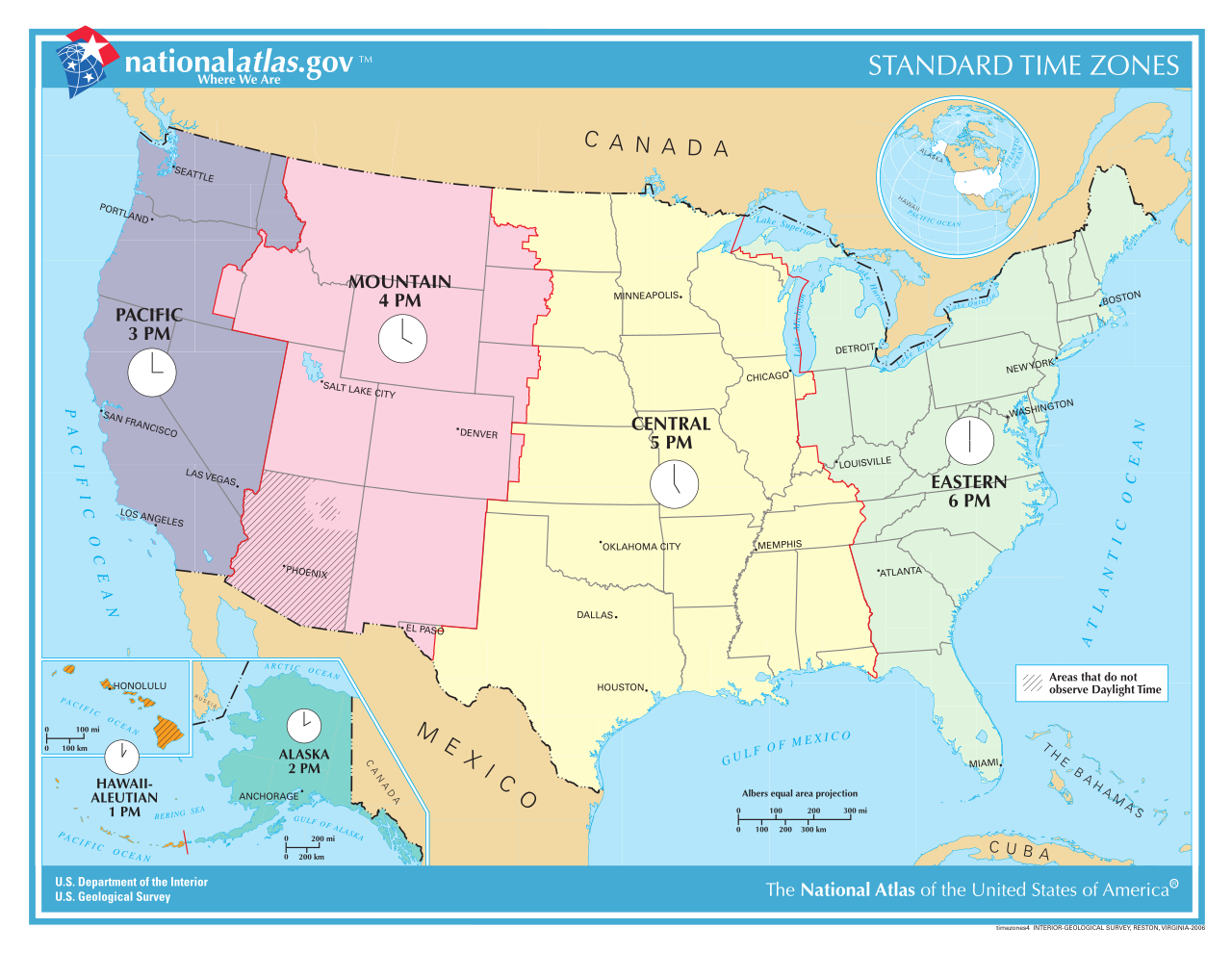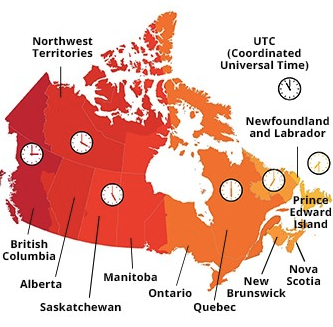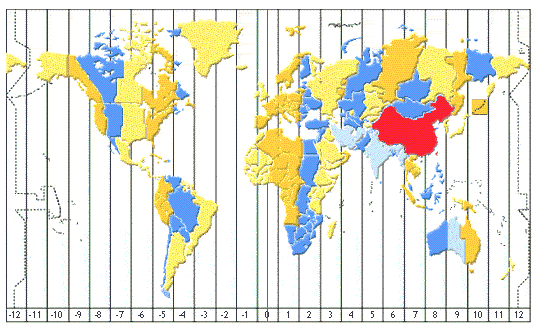Here in the mainland United States, we’re used to having 6 time zones. The mainland U.S. has Eastern time, Central time, Mountain time and Pacific time. Alaska is an hour behind Pacific time and Hawaii is 3 hours behind Pacific time.

By NationalAtlas.gov; uploaded by User:RaviC – http://nationalatlas.gov/printable/images/pdf/reference/timezones4.pdf, from http://nationalatlas.gov/printable/timezones.html, Public Domain, https://commons.wikimedia.org/w/index.php?curid=5012634
You can see from the map above that time zones in the U.S. have very uneven borders. This is the case around the world and we’ve already gone over why the borders of time zones aren’t straight and equidistant. However as craggy as they might be, each time zone generally is an hour ahead or behind the time zone next to it.
Except where it’s not
There are several places around the world that are outliers to the “one hour” rule. Here are the ones I know of, and why they chose to be that way.
Canada: Newfoundland

Most of Canada’s 6 time zones follow the “one hour” rule of time zones. However, the Canadian island of Newfoundland is not 3 or 4 hours behind UTC (Coordinated Universal Time), but 3.5 hours behind it.
When time zones were introduced in the late 19th century, Newfoundlanders chose to have that 30-minute difference because that was close to the local solar time in St. John’s, the city where most Newfoundlanders lived. (St. John’s is at 52.7 degrees west longitude, and 3.5 hours of solar time west of UTC is at 52.5 degrees of longitude.)
FUN FACT! The names of Canada’s 6 time zones are: Pacific, Mountain, Central, Eastern, Atlantic, and Newfoundland. You can remember them by the phrase Prime Ministers Can’t Eat Any Nachos.
Iran & Afghanistan
These two countries follow the same logic as Newfoundland. The capitals Tehran and Kabul, respectively, are located 3.5 and 4.5 hours east of UTC.
Nepal
Nepal’s capital, Kathmandu, is located near 5 hours and 45 minutes of solar time east of UTC, so Nepal chose that time for its time zone.
China

China technically takes up 5 time zones. But when time zones were starting to become a thing, the powers that be at the People’s Republic decided they wanted the entire country to just be in one time zone. It’s called China Standard Time (CST) and it’s the time that’s in Beijing (in China they call it Beijing Time).
India
India technically takes up 3 time zones. But like China, it decided to only have one time zone, which is 5.5 hours ahead of UTC.
India used to have more than just the one time zone. From timeanddate.com:
In 1884 two time zones were used in India: Calcutta Time (UTC+5:53:28) and Bombay Time (UTC+4:51:20)—just over an hour apart. Eventually, in 1905, the meridian near Mirzapur (82°33’E) was picked as the standard time for the whole country. This time zone was declared India Standard Time (IST) in 1947, though Calcutta Time was used until 1948 and Bombay Time until 1955.
Want to comment on this post? Great! Read this first to help ensure it gets approved.
Want to sponsor a post, write something for Your Mileage May Vary, or put ads on our site? Click here for more info.
Like this post? Please share it! We have plenty more just like it and would love it if you decided to hang around and sign up to get emailed notifications of when we post.
Whether you’ve read our articles before or this is the first time you’re stopping by, we’re really glad you’re here and hope you come back to visit again!
This post first appeared on Your Mileage May Vary
